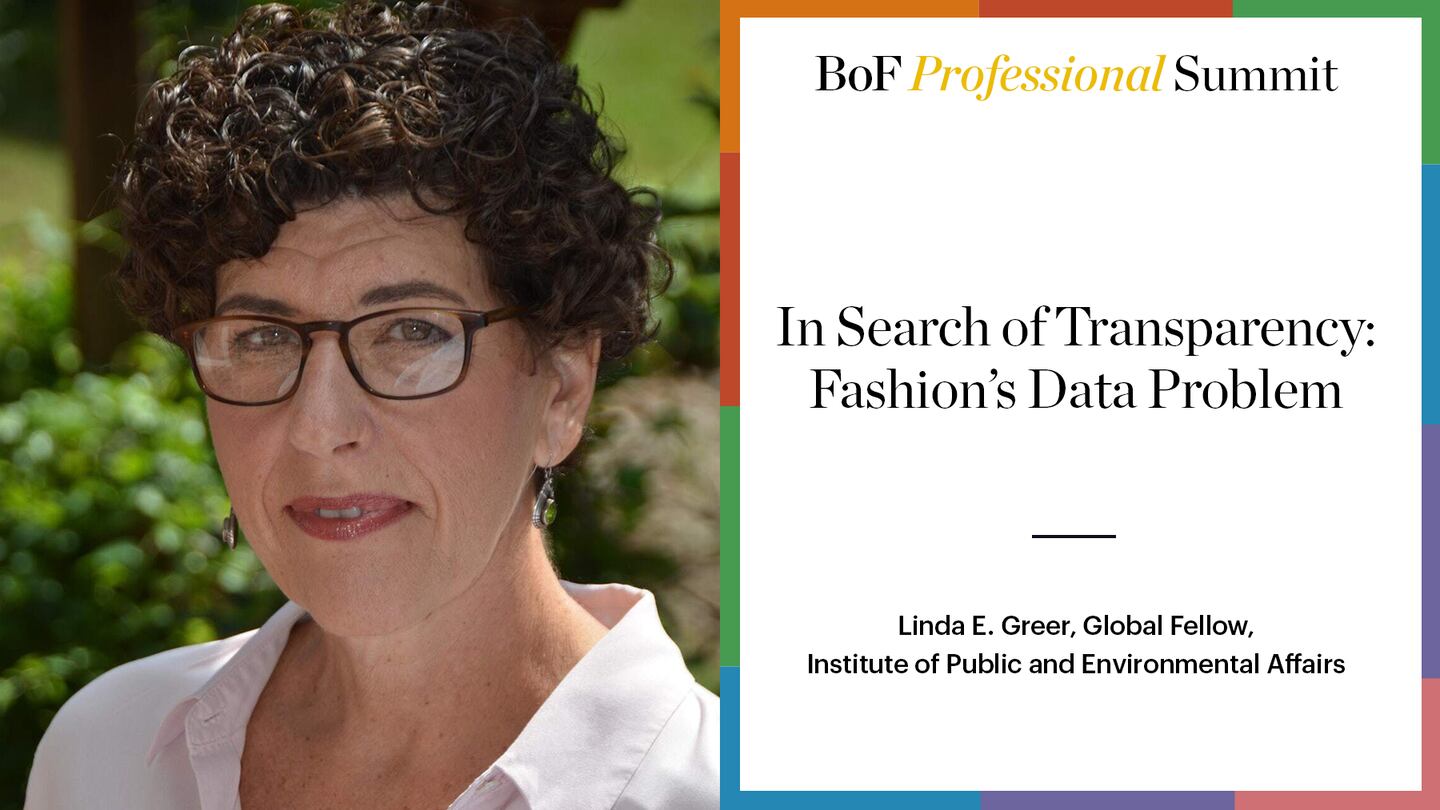
The Business of Fashion
Agenda-setting intelligence, analysis and advice for the global fashion community.

Agenda-setting intelligence, analysis and advice for the global fashion community.

To subscribe to the BoF Podcast, please follow this link.
One of the biggest challenges facing the fashion industry in its efforts to become more responsible and sustainable is bad data. While companies are under increased pressure to provide more information about working conditions and greenhouse gas emissions, the data they share is limited and often of dubious quality. At the BoF Professional Summit: Closing Fashion’s Sustainability Gap, Linda E. Greer, a global fellow at the Institute of Public and Environmental Affairs and a member of BoF’s Sustainability Council, joined BoF London editor Sarah Kent for a discussion on how fashion’s bad data is affecting its sustainability efforts.
Related Articles:
Measuring Fashion’s Sustainability Gap
ADVERTISEMENT
Scaling Up or Selling Out: How Can Sustainable Labels Credibly Collaborate with Big Brands?
Devising a New Social Contract for Fashion’s Garment Workers
Join BoF Professional for the analysis and advice you need. Get 30 days for just $1 or explore group subscriptions for your business.
The fashion industry continues to advance voluntary and unlikely solutions to its plastic problem. Only higher prices will flip the script, writes Kenneth P. Pucker.
The outerwear company is set to start selling wetsuits made in part by harvesting materials from old ones.
Companies like Hermès, Kering and LVMH say they have spent millions to ensure they are sourcing crocodile and snakeskin leathers responsibly. But critics say incidents like the recent smuggling conviction of designer Nancy Gonzalez show loopholes persist despite tightening controls.
Europe’s Parliament has signed off rules that will make brands more accountable for what happens in their supply chains, ban products made with forced labour and set new environmental standards for the design and disposal of products.